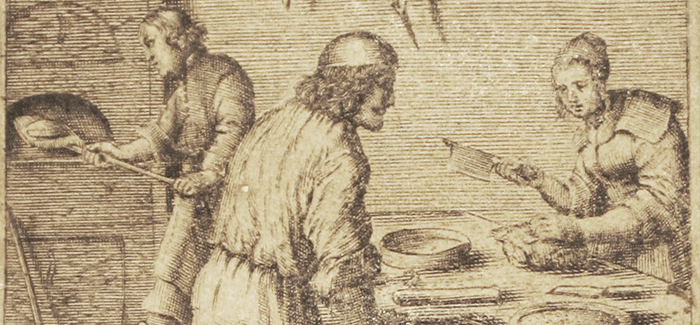
(Special Collections Research Center, University of Chicago Library)
How-to’s from the 17th-century chef who helped found French cuisine.
Before The Joy of Cooking and Julia Child, before Betty Crocker and James Beard with his bow ties and his American gourmet style, there was François Pierre La Varenne, who in 1651 published Le Cuisinier françois. A foundational text of modern French cuisine, the book introduced recipes and ingredients that later became staples.
One of a handful of innovative chefs serving France’s nobility in the age of Louis XIV, La Varenne helped bring cooking out of the Middle Ages and codify food preparation. He replaced spices with herbs, lard with butter, and used then-exotic vegetables like cauliflower, broccoli, and artichokes. “Before his work, people in European court circles favored heavily sauced, extravagantly spiced dishes,” says UChicago librarian Julia Gardner. “And he said, ‘Let’s back off on that; let the food speak for itself.’”
Gardner is curator of an exhibit at the University’s Special Collections Research Center, on view through July 13, 2013, tracing the evolution of cookbooks. Included are several La Varenne publications, one a 1655 edition of Le Patissier françois, a book on pastry making, both sweet and savory. The frontispiece offers a glimpse of a 17th-century French pastry kitchen.
It would be another hundred years before cookbook writing became the domain of housewives, housekeepers, and middle-class women rather than male chefs with courtly connections, and 200 years before recipes began to take the shape we recognize today, with lists of ingredients, step-by-step instructions, and standardized measurements. In La Varenne’s time, recipes were more discursive, spinning out into paragraphs that, Gardner says, “tell a story about the dish.”
